 |
 |
 |
| |
No Detectable Resistance to Tenofovir Disoproxil Fumarate (TDF) Following up to 240 Weeks of Treatment in Patients with HBeAg+ and HBeAg- Chronic Hepatitis B Virus Infection
|
| |
| |
Reported by Jules Levin
22nd Conference of the Asian Pacific Association for the Study of the Liver (APASL)
February 16-19, 2012 Taipei, Taiwan
SC Gordon1, A Corsa2, Y Liu2, MD Miller2, KM Kitrinos2, and P Marcellin3
1Henry Ford Medical Center, Detroit, MI, USA; 2Gilead Sciences Inc., Foster City, CA, USA; 3Hopital Beaujon, University of Paris, Clichy, France
Introduction
· Tenofovir disoproxil fumarate (tenofovir DF, TDF) is a nucleotide analog with potent antiviral activity in patients mono-infected with HBV and co-infected with
HIV-1 and HBV
· HBV pol/RT resistance mutations have been identified following administration of all other oral anti-HBV agents (lamivudine, adefovir dipivoxil, telbivudine, and entecavir)
· No amino acid substitutions associated with tenofovir DF resistance were detected in the HBV pol/RT through the first 4 years of TDF treatment of HBeAg- and HBeAg+ patients in Studies GS-US-174-0102 and GS-US-174-01031,2
Objectives
· To identify amino acid substitutions in the HBV pol/RT for viremic subjects (HBV DNA >400 copies/mL) during Year 5
· To evaluate the effects of these substitutions on the clinical response to TDF monotherapy in chronic hepatitis B
· To determine whether these substitutions alter susceptibility to tenofovir using in vitro HBV replication assays and to evaluate the cross-resistance profi le of
these substitutions
Methods
· Patients were enrolled in one of two double-blind, randomized studies of TDF [Study 102 (HBeAg-) or Study 103 (HBeAg+)] (Figure 1)
· Plasma HBV DNA levels were determined by Roche COBAS TaqMan assay (LLOQ = 169 copies/mL; 29 IU/mL)
· HBV pol/RT resistance surveillance was conducted following a a pre-determined virology analysis plan (Figure 2)
- Genotypic analyses utilized population di-deoxy sequencing (AA 1-344 of pol/RT)
- Phenotypic analyses3 were conducted in HepG2 cells transiently transfected with either:
· Recombinant HBV derived from patient HBV polymerase/ reverse transcriptase (pol/RT)
· Mutant viruses created by site-directed mutagenesis in the pCMVHBV (genotype D) laboratory isolate
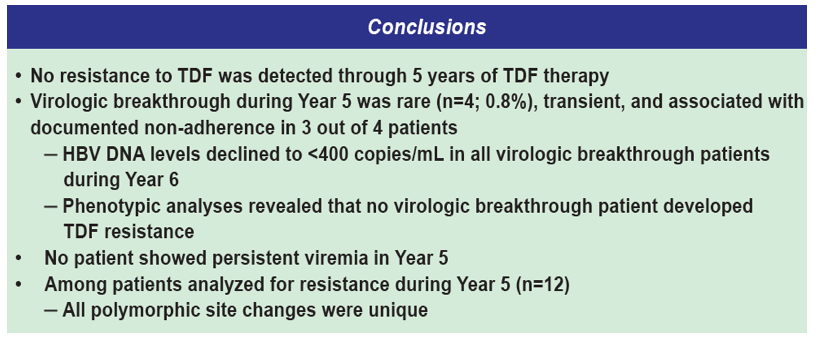
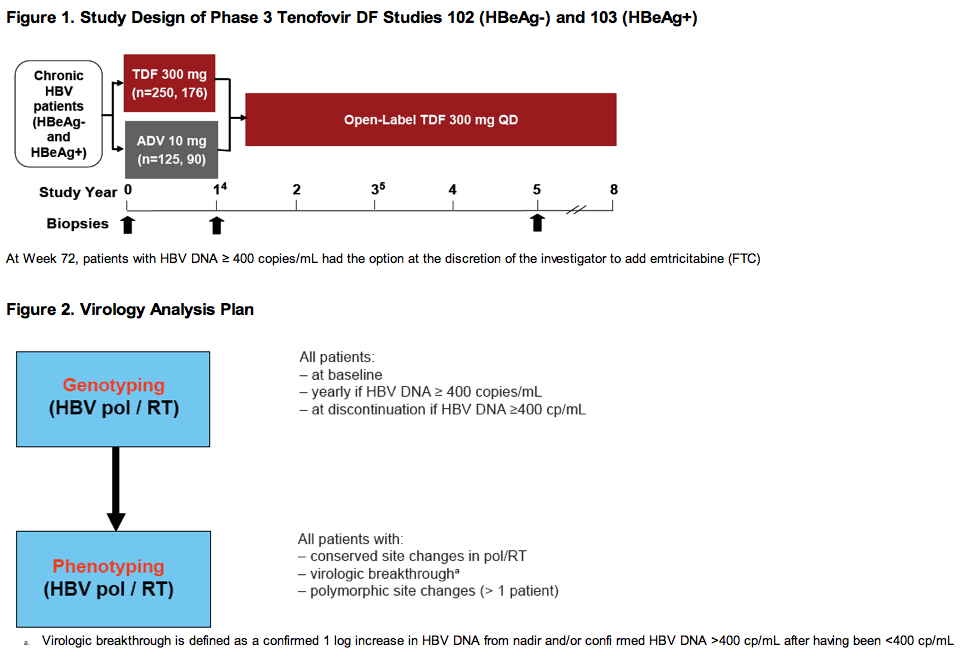
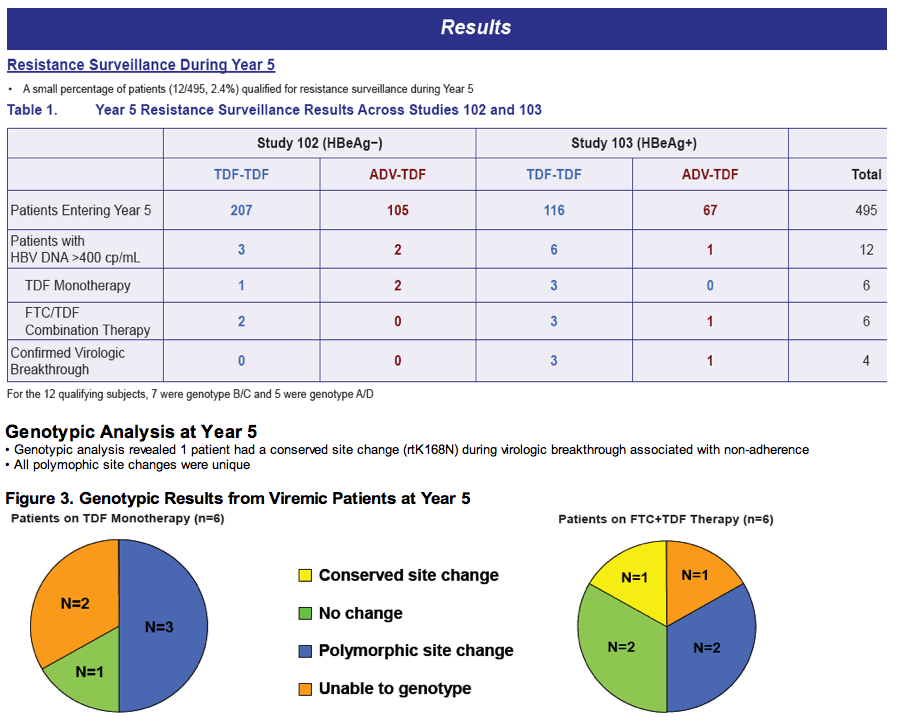
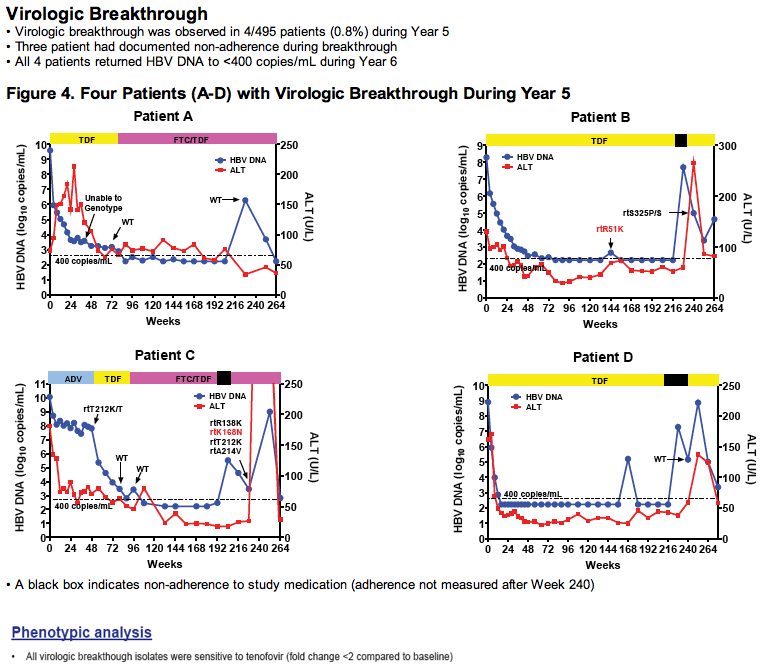
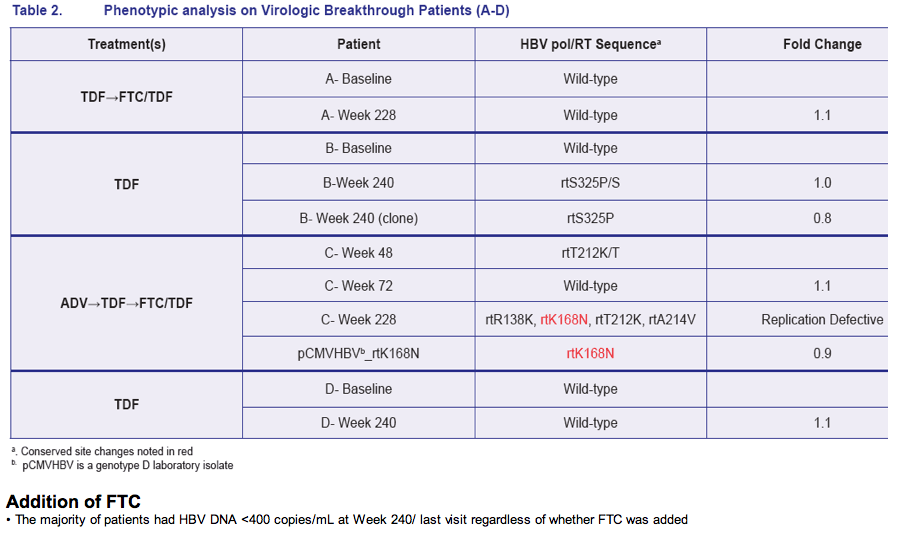
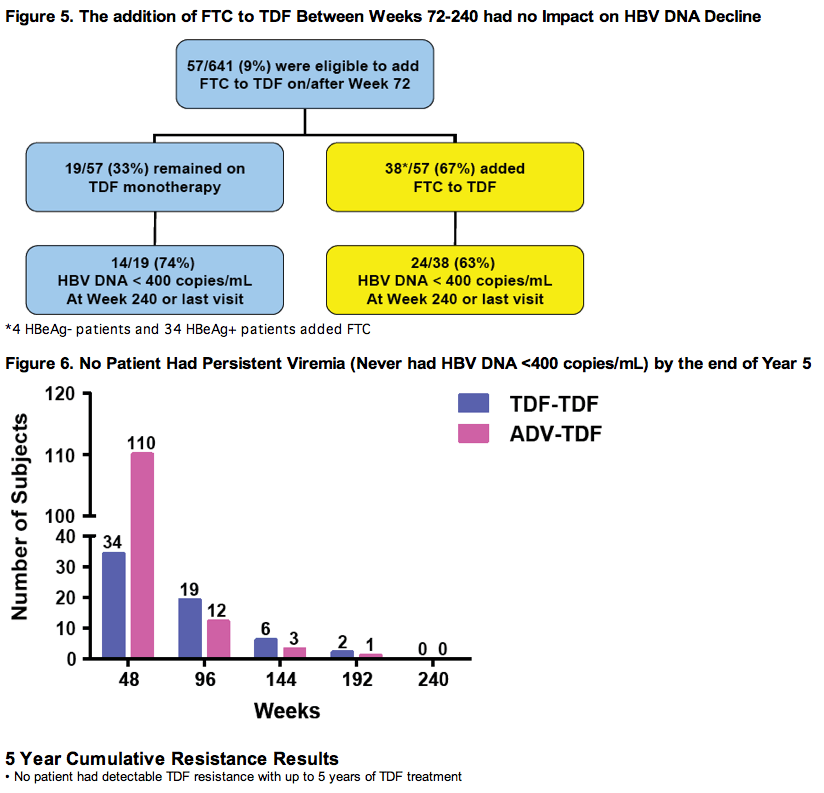
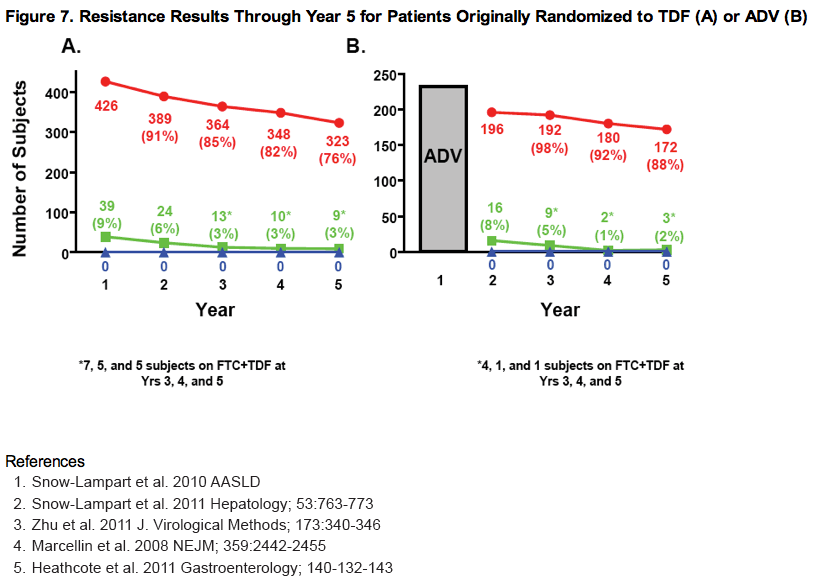
|
| |
|
 |
 |
|
|